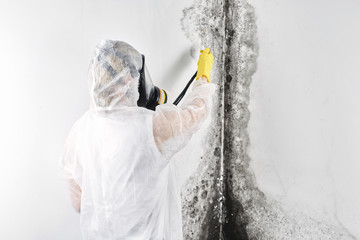If a mold problem has contaminated your home or business, you may wonder if you need to pay for Mold Remediation. This process is critical because mold can be dangerous to humans and cost you a lot of money if you wait until it is too late. Remediation companies can help you decide whether to spend money on a mold remediation project.

Mold Remediation Lynchburg VA perform the process by scrubbing surfaces to remove mold spores from them. They will also need to spray a biocide on the affected surfaces to kill any remaining spores. Once the mold has been removed, the remediation team will apply a protective layer to the areas in the building. They will then use an air purifying spray to prevent any reoccurrence of mold. These techniques are not only effective but safe as well.
Proper containment measures include covering the affected area with plastic sheeting and providing protection at entry points. Proper containment also means sealing air vents in the impacted area with plastic and taping or stapling. Lastly, use a zippered door to close the entry points. Having two separate entry points for the impacted area and a clean room. The remediation team will apply a protective coating to the affected area to prevent cross-contamination.
To minimize the impact on occupants, remediation workers must take building materials out of the area affected by the mold. Building materials must be sealed, and any items containing mold growth should be stored in closed containers. If the building materials cannot be reused, they should be disposed of as ordinary construction waste. To limit the dispersal of mold spores, building materials containing heavy mold growth should be covered with polyethylene sheeting or sealed with duct tape. Remediation activities should take place at off-peak hours.
In addition to mold removal, you must repair any plumbing problems and clean up water damage. While cleaning a patch of mold using bleach and water won’t solve the problem, keeping the area moist will allow the mold to return. Therefore, you must control the sources of dampness to prevent mold growth in the first place. You can also eliminate the risk of recurrence by preventing future occurrences. And ensuring proper ventilation will help prevent the growth of mold.
Professional remediation crews will arrive quickly and assess the amount of mold growth. They will then use equipment to remove and dispose of heavily damaged materials. After they have disposed of the heavily damaged materials, a post-remediation inspection is performed to determine whether remediation has been properly performed. The remediation process also involves the cleaning and disinfection of personal items and carpets. After completing the mold removal, remediation crews will use specialized equipment and procedures to ensure that the building or property is mold-free and free of contamination.
While biocide is not routinely recommended during mold remediation, it may be used under the right circumstances. For example, the use of biocide is often necessary in situations where the area has been exposed to a large number of spores. Moreover, the use of biocide is not recommended if you are immuno-compromised. Furthermore, sterilization does not completely eradicate mold, so the ambient air spores will still be present.
Contents restoration is another important step in the mold remediation process. This process occurs near the start of the remediation process. Many items can be salvaged through contents restoration. During contents pack out, the mold remediation company will remove any saveable items, such as books, furniture, and personal items. Once they have completed the cleanup, they will sanitize the area and prepare for the reinstallation of the new materials.
Once the mold remediation process is complete, the homeowner must determine if their efforts are successful. They should not see any signs of recurring water damage, or smell mold in the air. After remediation, the homeowner can safely occupy the home without the risk of further exposure. This is an important step because the remediated area will become more susceptible to mold if the moisture problem is not solved. The remediation process will be ineffective if the cleanup process does not solve the issue.
Although there are no specific symptoms of a mold problem, the presence of the substance can be hard to detect without a professional. Typically, mold growth appears as spots, speckles, or furry islands on surfaces and fabrics. In most cases, a mold infestation is not a widespread problem, but it is important to get it evaluated to ensure you are safe from further exposure. The EPA recommends using a professional remediation company to detect and treat mold infestation properly.
